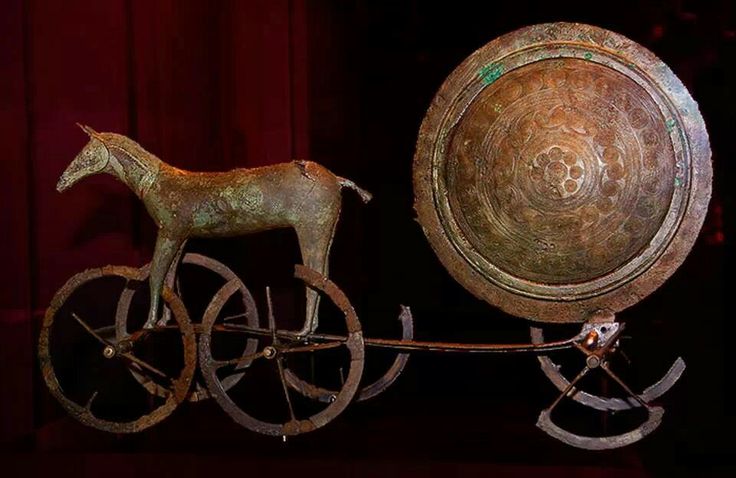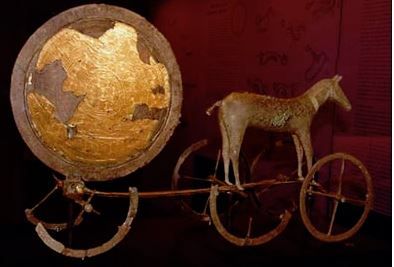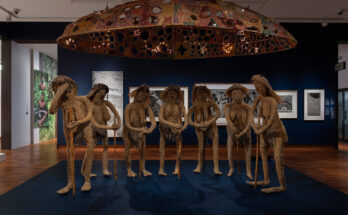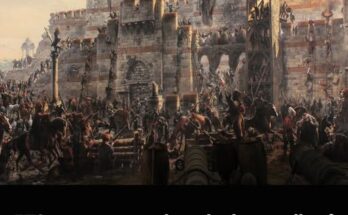
In the rolling plains of Bulgaria, beneath layers of time, a breathtaking relic of an ancient civilization lay hidden—a Thracian chariot, complete with the skeletal remains of horses still harnessed to it. For over two millennia, this ancient treasure remained untouched, a silent witness to the passage of ages, until the careful hands of archaeologists brought it once again into the light.
The discovery of the Thracian chariot with its accompanying horse skeletons is a remarkable window into the forgotten world of the Thracians—an enigmatic civilization that once thrived in the lands of Southeastern Europe. The Thracians, known for their fierce warriors, elaborate rituals, and skilled craftsmanship, left behind a legacy of mystery, their history often overshadowed by the more prominent Greek and Roman empires.
Unearthed near the village of Svestari in northeastern Bulgaria, the chariot was found in a burial mound—a sacred resting place of Thracian nobility. The mound, known as a tumulus, was a common form of burial for Thracian aristocrats, serving as both a tomb and a symbol of status and power. What set this particular find apart was the extraordinary preservation of the chariot itself, complete with its iron components, wooden frame, and intricate bronze decorations. But even more astounding were the skeletal remains of two horses, still harnessed to the chariot—a haunting testament to the ancient Thracian ritual of burying noble warriors with their steeds for the afterlife.

The chariot, adorned with intricate metalwork, reveals the Thracians’ advanced metallurgical skills. Bronze decorations featuring geometric patterns, mythological motifs, and animal figures adorn the vehicle, hinting at the spiritual beliefs and artistic sophistication of this ancient culture. Archaeologists also discovered fragments of weapons, jewelry, and pottery nearby, further illuminating the world of the Thracian elite.
But beyond the artifacts, it is the symbolism of the horses that captures the imagination. The decision to bury the horses alongside the chariot is a poignant reflection of the Thracian belief in an afterlife where noble warriors would continue their journey, not on foot, but in their majestic chariots, driven by loyal steeds. It speaks to a worldview where death was not an end but a passage—a journey to the realm of the gods.
The excavation site has also sparked debates among historians and archaeologists regarding the identity of the individual buried within the mound. Was this a Thracian warrior-chieftain, a noble lord, or perhaps even a priest with ceremonial responsibilities? The lack of an intact human skeleton complicates the puzzle, leaving experts to rely on the artifacts and the grandeur of the burial to infer the status of the deceased.
Thracian chariots are rare archaeological finds, and each discovery adds a new chapter to the story of this ancient civilization. The Svestari chariot, with its spectral horses still at attention after 2,000 years, is a particularly dramatic example—one that offers a glimpse into the Thracian world of ritual, status, and spiritual belief.
The meticulous preservation efforts by the Bulgarian archaeological team have ensured that this incredible find will be studied, displayed, and celebrated for generations to come. It is a reminder of the extraordinary stories that lie buried beneath our feet—waiting for the earth to give up its secrets, for the past to speak again.


